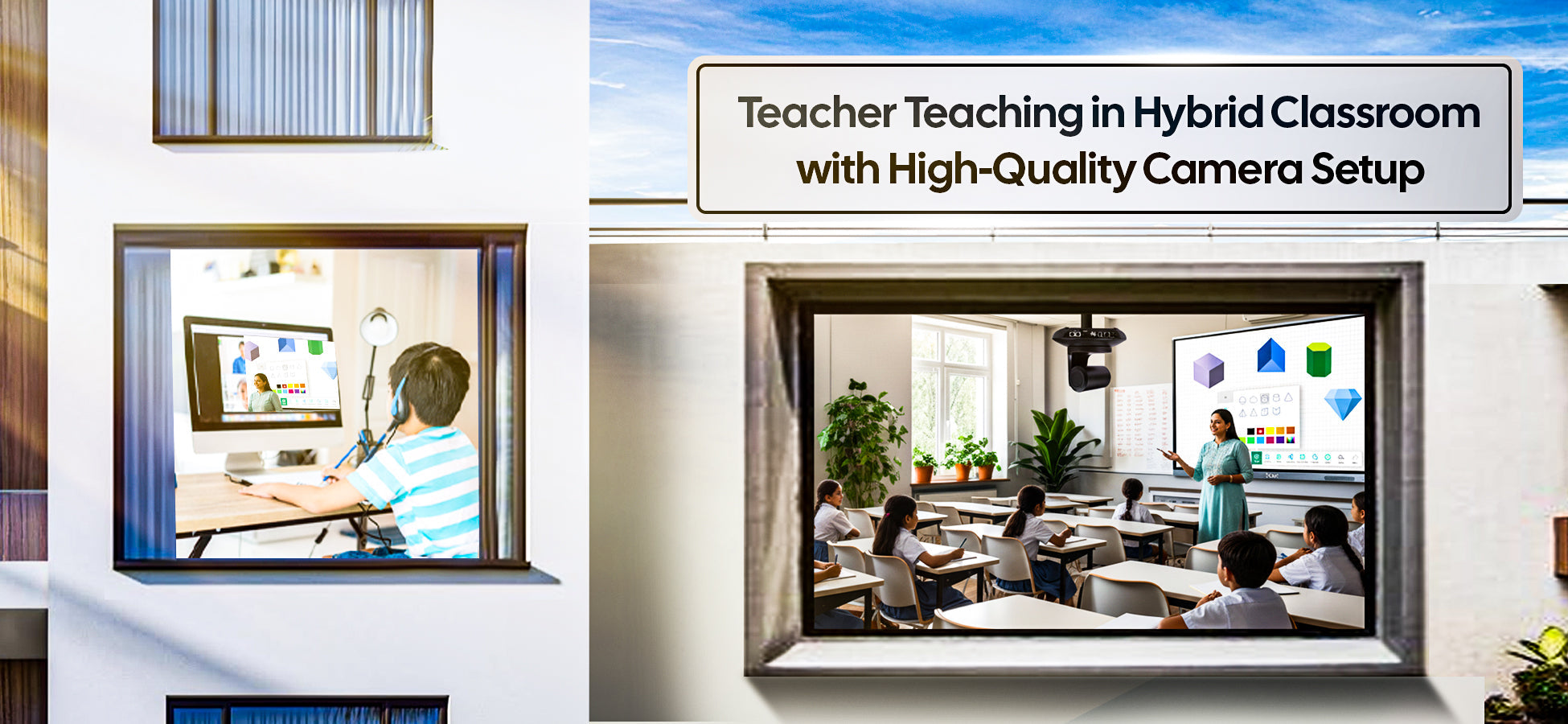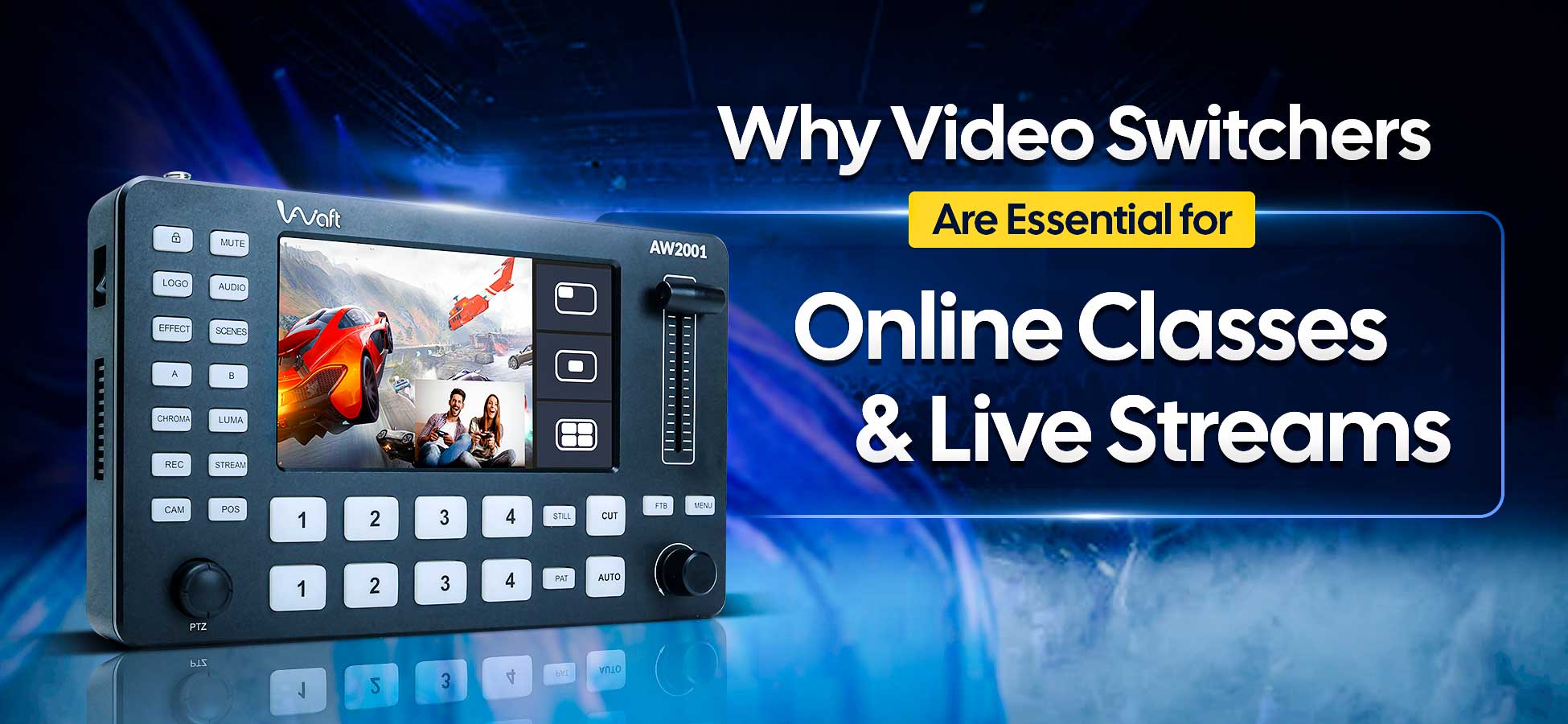- Introduction
- Why Does Audio Quality Matter?
- Tips to Improve Audio Quality for Online Teaching
- Find the Right Recording Space
- Soundproof/Sound Treat Your Studio
- Use a Quality Microphone
- Use Headphones
- Use Good Recording Software
- Use Live Monitoring/Producer Mode
- Export in Uncompressed Audio
- Experiment With Mic Technique
- Conclusion
Introduction
In a post-pandemic environment, online learning channels have proved vital to both students and teachers. With schools and tuition centers closing, learning in an online classroom has become the only method to keep global education going. This involves resolving a variety of technological difficulties in India. There is a lot to consider, from high-speed internet to consistent video quality and a quiet environment. The need for high-standard audio quality is sometimes overlooked in such virtual classes.
To maximize student engagement, clear and consistent audio is crucial to the whole learning experience. Whether you use earbuds or headphones, you must be able to hear the speaker's voice in the absence of facial expressions and nonverbal clues.
Why Does Audio Quality Matter?
High-quality audio is more than just more pleasant to hear. In fact, studies show that audio quality has a direct impact on whether people trust what they hear.In a study conducted by USC and the Australian National University, scientists showed 97 participants a video of a scientific presentation. The first group watched the video with good sound quality, while the second group watched the same film with poor sound quality. The audience was then asked to rate the speech.
When the sound quality was poor (and the speech was difficult to understand), "viewers thought the talk was worse, the speaker less intelligent and less likable, and the research less important."
Tips to Improve Audio Quality for Online Teaching
Find the Right Recording Space
To begin, pick a room or recording studio for your online teaching audio recording. Find a quiet place where you won't be disturbed if possible. The less background noise your microphone picks up, the quieter and more secluded your area is. Look for a recording space that has no windows or shared external walls for Online Teaching. It's also a good idea to avoid appliances that create intermittent noises, such as a furnace.
Soundproof/Sound Treat Your Studio
Next, check that your studio has the appropriate dynamics for your recording setup for online learning. If the room lacks carpet, begin with a rug and soft furnishings to absorb echoes. You can also spend money on soundproofing and sound treatment materials such as:
- Traps for bass
- Tiles made with acoustic foam
- Diffusers of sound
Use a Quality Microphone
If you're just starting out with audio content creation, the built-in microphone on your computer or smartphone may suffice. However, if you're serious about producing high-quality audio, you'll need an external microphone.
This is the place to go if you're looking for a one-of-a-kind in existence. You must choose the suitable polar pickup pattern, dynamic or condenser microphones, and whether to use a USB or XLR connection.
You'll also want to get a microphone stand or boom arm to support it to decrease the danger of damage (not to mention uneven sound). A sturdy shock mount will also shield your microphone from vibrations and undesired noises.
Finally, unless you have a USB microphone, you'll need something to connect your microphone to your computer. It could be an audio interface or an audio mixer. It can be more helpful for optimizing the audio for online teaching.
Use Headphones
Headphones reduce audio echo and bleed, preserving and improving the quality of your recording. Without headphones, your microphone will very certainly pick up noise from your speakers (especially if you're recording with remote visitors).
And, as you record, headphones can help you improve your own performance in real-time and help in the best audio outcome for online teaching. You'll be able to hear yourself better, allowing you to change volume levels and mic angles as necessary.
Finally, a nice pair of headphones will allow you to hear the recording more clearly during the editing process. In comparison to your computer's speakers, headphones give accurate and high-fidelity audio, allowing you to pick up on little flaws that require adjustment.
Use Good Recording Software
Choose high-quality recording software to offer crystal-clear audio if you want optimal audio quality during the recording stage for teaching purposes.However, not all audio recording software is produced identically; some just have different goals. You can record audio using programs like Zoom and Skype, but these platforms are meant for internet calling, therefore audio files are compressed for faster transfer. Although compressed audio is easier to transfer, the audio quality suffers as a result.
Use Live Monitoring/Producer Mode
Choose recording software that includes live monitoring or producer mode if at all possible. If you (or, better still, your producer) can pay attention to volume levels and mic positioning during recording, you can save yourself hours in the editing studio afterward.
even the highest-quality audio recordings suffer when exported in a low-quality format.
MP3s, for example, are a popular audio file format, but they're "lossy" files, which means data is lost during the compression process.
WAV files, on the other hand, are "lossless", that is, they do not erase any data. You'll receive considerably better sound quality and a much easier time editing your audio files if you use a WAV format. Having said that, there is an argument to be made for employing both sorts of audio formats.
Experiment With Mic Technique
How well you use your recording equipment determines a large portion of your audio quality. The right mic angle, settings, and physical behavior will increase the quality of your audio on the other end.
- Angle: Experiment with several microphone angles to determine which one produces the best sound quality. If you're not using a pop filter, try angling your microphone 45 degrees away from your lips to eliminate some of the stronger consonants.
- Gain: Gain is the decibel input volume, and setting it too high can cause audio distortion. Speaking loudly into your microphone, then checking your recording software to determine if the audio levels are above the -10dB range on your meter. If so, reduce your increase till the levels are more tolerable.
- Speaking Volume: Even with the proper mic input settings, speaking at a pretty steady volume will help your future self in the editing booth. Avoid whispering or murmuring; always speak clearly and audibly, and try not to speak too loudly.
Conclusion
Audio quality is very important in online teaching because if the students will not be able to hear you properly, there are chances that they will not be interested in your content. To get a better audio quality, you must follow certain tips as mentioned above and choose a decent microphone that meets your requirements. You can contact the team of Edusquadz and we have plenty of options of microphones that will cater to your needs and help you in improving the audio quality of your online teaching.



